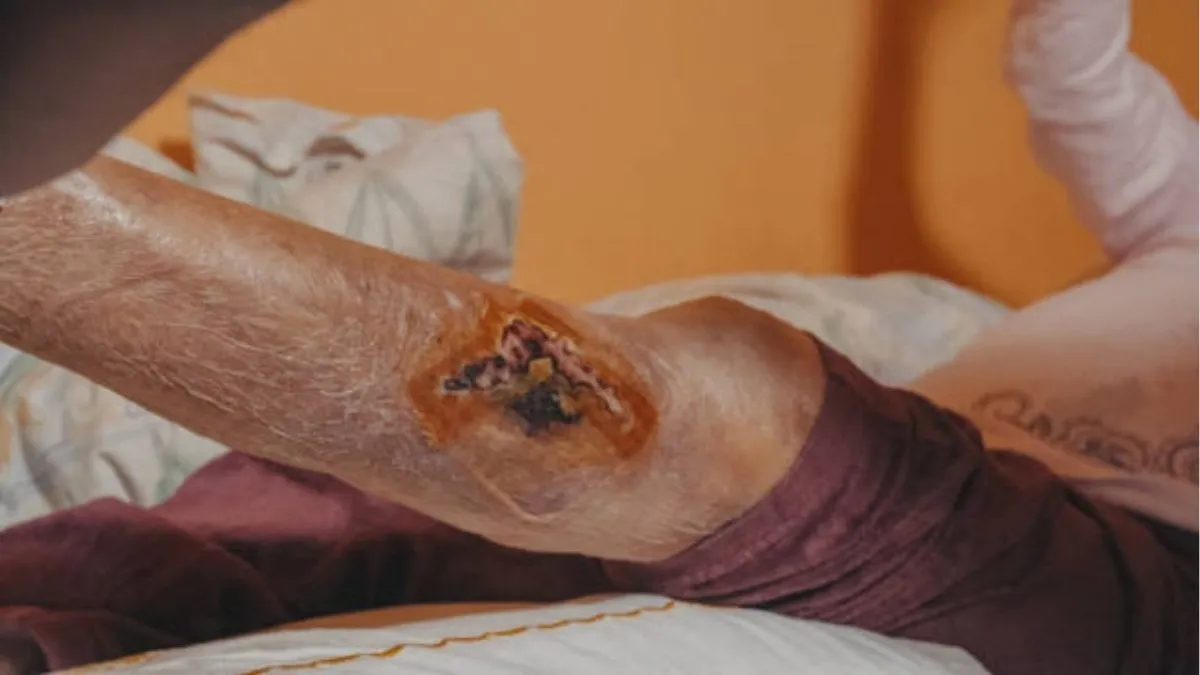HEALTH AND FITNESS
How Vascular Issues Affect Wound Healing: What Patients Need to Know

Key Takeaways:
- Proper blood flow is essential for delivering oxygen and nutrients to healing tissues.
- Vascular problems can cause slow or incomplete wound recovery.
- Early detection and specialized care help prevent infections and complications.
- Healthy lifestyle choices and medical support improve circulation and healing outcomes.
Table of Contents
Introduction
Wound healing is a crucial process that depends on the health of the body’s vascular system. When blood vessels aren’t functioning properly, the delivery of oxygen and nutrients to affected tissues becomes compromised, making it much harder for wounds to close and regenerate. Whether you care for someone with wounds or are managing a wound yourself, understanding how vascular issues may impede healing is vital for better outcomes and faster recovery. If you suspect poor circulation may impact your recovery, seeking care at a specialized wound care clinic is a proactive step toward comprehensive treatment and preventing complications.
The vascular system—composed of arteries, veins, and tiny capillaries—plays a fundamental role in every stage of wound healing. Impairments in circulation can lead to serious risks, such as infections, non-healing ulcers, or even limb loss. Empowering yourself with knowledge about the effects of vascular health on wound recovery can help you or your loved one achieve better long-term results and avoid preventable setbacks.
The Role of the Vascular System in Wound Healing
The healing process unfolds in several overlapping stages, each of which relies on healthy blood flow:
- Hemostasis: Injury triggers blood clotting to stop bleeding and form a protective scab quickly.
- Inflammation: White blood cells rush to the wound site, fighting infection and clearing away dead tissue.
- Proliferation: New tissue, collagen, and fresh blood vessels (through angiogenesis) fill the wound bed and help close the gap.
- Remodeling: The final phase where the wound matures, collagen fibers strengthen, and the skin regains some of its natural resilience.
Proper vascular function ensures all these steps proceed efficiently. When blood flow is sluggish or impaired, wounds may stagnate, tissue can break down further, and infections become more probable.
Patients with chronic vascular issues often find that wounds linger for weeks or months longer than expected and may develop recurrent ulcerations in the same area. According to the Centers for Disease Control and Prevention (CDC), millions of Americans are living with vascular diseases that increase their risk for slow-healing wounds, especially as they age or develop other health issues.
Common Vascular Conditions Impacting Wound Healing
Several vascular disorders are recognized for their significant impact on the wound healing process:
- Peripheral Artery Disease (PAD): PAD is the narrowing of arteries supplying blood to the limbs, often the legs. Reduced blood flow can leave tissues starved of oxygen, hindering the development of new tissue and making infections more difficult to overcome. PAD affects over 8.5 million people in the U.S., particularly those over 60 years old.
- Chronic Venous Insufficiency (CVI): CVI occurs when vein valves are weakened or damaged, causing blood to pool in the lower legs and increasing pressure. This often results in stubborn venous ulcers that are prone to recurrence.
- Diabetes-Related Vascular Damage: High blood sugar levels damage small and large blood vessels, reducing circulation, immune response, and tissue regeneration—particularly in the feet and lower legs.
Other conditions, such as blood clots, deep vein thrombosis (DVT), or connective tissue disorders, can also hinder wound repair by impeding the vascular system’s efficiency.
Signs That Vascular Issues May Be Affecting Wound Healing
Timely recognition of vascular complications can prevent chronic wounds and other complications. Watch for these warning signs:
- Wounds that show no significant healing for more than 30 days
- Pain or cramping in the legs while walking or resting (claudication)
- Changes in skin color—such as bluish, purplish, or darkened patches—around the wound
- Cold or numb sensations in the feet or toes, which may indicate poor circulation
- Noticeable swelling in the feet, ankles, or lower legs
Consult a healthcare professional promptly if any of these symptoms are present.
Strategies to Improve Vascular Health and Enhance Wound Healing
Supporting good vascular health lays the foundation for optimal wound repair. Consider these clinically backed strategies:
- Regular Exercise: Gentle movement, such as daily walking or leg exercises, keeps blood circulating and aids natural healing mechanisms.
- Healthy Diet: A diet rich in vegetables, fruits, whole grains, lean proteins, and healthy fats supports vascular integrity and reduces inflammation. Reducing sodium helps keep blood pressure in check, which protects vessel walls.
- Smoking Cessation: Smoking causes the blood vessels to narrow and harden, restricting blood flow. Quitting smoking delivers immediate and long-term improvements for wound repair and overall vascular health.
- Medical Management: Physicians may prescribe medications like antiplatelets or vasodilators to improve circulation. Managing underlying conditions such as diabetes, high cholesterol, or high blood pressure is equally important.
When to Seek Professional Wound Care
Seek immediate assistance from a specialized wound care provider if your wound becomes infected, stops healing, or if you have a known history of vascular disease. These clinics use advanced treatments like compression therapy, debridement, and hyperbaric oxygen therapy—often in combination with coordination with vascular specialists.
Delaying care for vascular ulcers or non-healing wounds greatly increases your risk for complications, including severe infections, tissue death, or even amputation in the most severe cases.
Final Thoughts
Healthy vascular function is essential for rapid and effective wound healing. Staying alert to the risks associated with poor circulation and addressing lifestyle factors can support the body’s natural repair systems. If you’re struggling with a stubborn wound or vascular condition, seek medical guidance early to access the most up-to-date, evidence-based care options.
-

 GENERAL5 months ago
GENERAL5 months agoChristofle – For Those Who Dream of Family Heirloom Silver
-

 SPORTS7 months ago
SPORTS7 months agoDiscover the World of Football with Streameast: Watch Your Favorite Leagues and Tournaments
-

 GENERAL4 months ago
GENERAL4 months agoUncovering the World of кинокрадко: The Dark Side of Film Piracy
-

 GENERAL2 months ago
GENERAL2 months agoATFBooru: Anime, Gaming, and Subculture Imageboard























